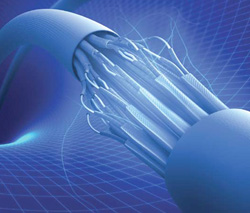Way back when I started in professional audio, hooking up a sound reinforcement system was a pretty straightforward affair. Signals ran one way, point-to-point, and every signal had its own cable.
Larger systems included a multi-channel snake, which allowed us to position the mixing board away from the stage and hear what we were actually putting through the system.
Over the years I’ve watched as analog systems have progressed from simple cables to complex routing solutions.
These interconnect systems can feature quick cable disconnects, splitters, ground lifts, sub stage snakes, and even stage drop boxes that have built-in direct boxes (DIs).
But no matter how complex the analog system has become, it still follows the old rule that signals run one way, point-to-point, and every signal has its own cable—except now those cables might be part of a larger multi-conductor bundle.
When digital technology first came to the live audio scene, it was used mainly for signal processing and effects, eventually making its way into control and transport systems. These early systems suffered from a few problems – there was a relatively high initial investment required, as well as issues with latency.
Until fairly recently, the latency was far too great for some of these products to be used in a live setting. Instead of using dedicated wires for each signal channel, digital signals share a common fiber optic, coax, or Ethernet Cat 5 and Cat 6 cable.
The days of needing three or four stagehands to wrestle a large, heavy multicore snake to connect a larger system will eventually come to a close. One stagehand can easily carry a reel with 300 feet of digital cable.















